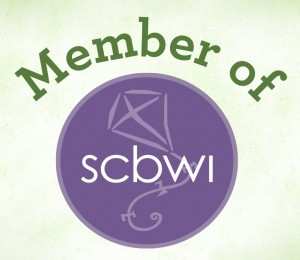Prompt Me
We’ve all encountered it: the dreaded writing prompt. Even my kids, who are in the third and fourth grade, have had to deal with it. Somewhere, some time, some person has stood up in front of a group of people and produced a writing prompt.
I’ve encountered a few different types of writing prompts over the years:
The Pressure Cooker Prompt
Oddly, this can be one of my favorites. The prompter gives a quote, or the beginning of a line, or even shows a picture. Once prompted, everyone is supposed to huddle over their keyboards or papers and write their little fingers off. Afterwards, people share what they’ve written.
The problem with the pressure cooker is, well, the pressure. A lot of people (including me, occasionally) freeze up under the pressure. If it’s done properly, though, that pressure can actually encourage creativity instead of crunching it. For me, the pressure cooker has three advantages:
- It’s timed. The advantage of being timed probably isn’t an advantage for everyone. Some people work well under a deadline. Some don’t. I do. Tell me I have thirty minutes to write, and the odds are pretty good it’ll get done. Give me three weeks, and I start to run into trouble.
- I know I’ll have a chance to share. Again, this goes to attitude. If I know I’m going to be reading out loud, and I always want to read out loud, my intensity increases, and my quality ticks up a notch.
- No one expects much of anything. This one may seem to contradict the second one, but I find it gives me a a sense of freedom. I can take crazy chances, and then laugh about them afterwards.
- Be critical. Thinking that your impromptu writing exercise is going to be ripped apart is a surefire way of losing all incentive to write. Before prompting, the prompter needs to establish the ground rules: no negative feedback allowed. Pressure cookers work when they’re free and unfettered. That’s the only way they work.
- Force people to share. Again, the best way to do a pressure cooker is to ease up on the pressure. Encourage people, don’t force them. I had one prompt that went horribly wrong, and by horribly wrong, I mean that my text was literally a description of a dark spot on a piece of wood. I like to think I was going somewhere with it, but when the prompt ended, all I had was two paragraphs talking about how dark the spot was. The prompter, knowing I usually like to read, cajoled me into it. Afterwards, she said “yeah, okay, you were right.” And told the rest of the group to remind her of my piece if she ever tried to force someone to read again.
- Talk after you’ve given the prompt. A pressure cooker is all about writing. People who want to be involved in it, want to immerse themselves in it. The last thing they want is to be trying to concentrate while other people are chattering.
The Creative Inspiration Prompt
You find these prompts in countless books and web sites. The idea is that you pick a random prompt and then sit down and write about it. You are probably different from me, but this never works for me. And by “never,” I mean the expanded form: “not ever.”
The problem is simple: it presents none of the things that drive my writing. There’s no audience. There’s no finished product. There’s no sharing with other people and discussing. It’s completely solitary.
The Collaborative Prompt
I discovered this one in a writing group that I’m currently in. Everyone comes up with different elements of a story, broken into categories like “mood” and “odd object” and so forth. The writers then pick random elements for each category and attempt to write a story.
It’s super, super fun. The writing isn’t timed. Instead, we typically have a couple of weeks to do it. It’s a real kick trying to pull the disparate ideas together, and I love seeing how other people use the ideas that I came up with. I highly recommend this one.
The Storytelling Prompt
This is the only prompt that I invented (as far as I know). I made a game called StoryTellers where players tell a story together, with each person coming up with a few lines at a time. During playtesting, however, we found that no one could start the story. So, we came up with a bunch of “story starters” for people to use. Suddenly, the game took off.
This is not an ad for my game. It is, however, an interesting idea for a prompt. Instead of doing a Pressure Cooker, the next time your group is looking for a prompt, try doing a prompt where the first person tells a bit, and then the next person, and then the next, until the story has gone around the room. It’s not exactly writing, but it sure can be fun (and silly).
An interesting variant of this prompt is the “If you had a” game that I play with my kids, where the person who starts the game asks “If you had a ___, what would it be?” The ___ is filled in with some noun, as in “if you had a castle, what would it be?” or “if you had an adventure island, what would it be?” Each person answers the question with a short description or story, with the person who asked the question going last. Then everyone votes on whose is their favorite (you can’t vote for your own).
How about you?
What kind of prompt writing do you like? What drives your writing?
Want to comment? Hit me up on Threads or Facebook!



